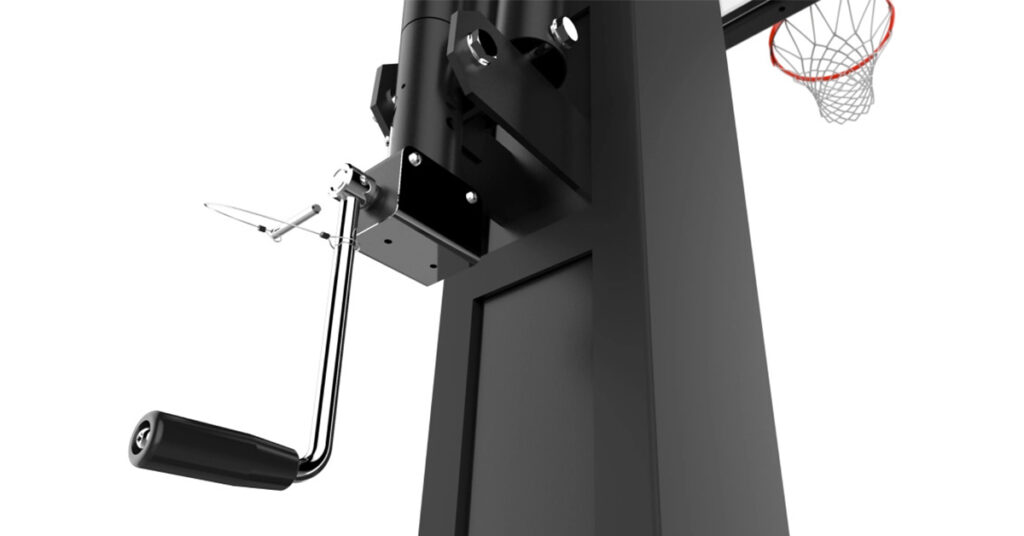Over the past two decades, the basketball world has seen a transformative innovation: adjustable basketball hoops. No longer are players of varying ages and skill levels restricted by a standard hoop height. Modern technology and design advancements now allow hoops to adjust to the player, making the game of basketball accessible to everyone.
The Evolution and Mechanics of Adjustable Basketball Hoops
However, with innovation comes variety, and the market is now flooded with adjustable basketball hoops, each boasting a different mechanism. So, which one should you choose? This article breaks down the evolution and the mechanics of adjustable hoops to guide you in making the best choice for your needs.
The Beginning: Cables, Pulleys, and Winches
In the pioneering days of adjustable hoops, the system relied on a blend of cables, pulleys, and winches. This design anchored a cable to the lower extension arm, looped it over the main pole using a pulley, and then connected it to a winch at the back. By turning the winch handle, players could raise or lower the backboard. However, this mechanism wasn’t flawless. Over time, the winch’s teeth would wear out, leading to system breakdowns, while the cable could unravel and jam the winch. Surprisingly, some major brands still employ this design today.
The Crank System: A Turn for the Better?
Engineers, always in search of improvement, introduced the crank system. This mechanism is reminiscent of the cranks on trailers; a handle turns an internal screw mechanism which then raises or lowers the connected object. Not only was this more user-friendly, but it also enhanced the hoop’s aesthetic appeal.
But as backboard materials evolved from wood, to fiberglass, to acrylic, and finally to tempered glass, they became heavier. This added weight put undue pressure on the crank system. Too much weight made cranking arduous, while increased pressure hastened wear and tear, eventually causing the system to fail.
Lift Assist Mechanisms: Lightening the Load
Recognizing the pressure on cranks, manufacturers introduced lift assist mechanisms. These are designed to offset the hoop system’s weight, simplifying height adjustment. Various brands adopted different technologies, with some using a pneumatic cylinder and others resorting to springs. This lift assist innovation aimed to give the feel of playing in a professional arena by neutralizing the system’s weight, making adjustments smooth and effortless.
Yet, some manufacturers chose an alternative route, opting for lighter backboard materials and subpar steel to keep the system’s overall weight low. This compromise, unfortunately, sacrifices the professional playing experience.

The Best of Both Worlds
If you’re after an authentic playing experience, aim for a system that boasts a pro-view ½” tempered glass backboard and breakaway rim. With the backboard alone weighing over 200 lbs., it’s crucial that the supporting pole is constructed from robust heavy gauge steel. And to effortlessly adjust the hoop from 5’ to the standard 10’, look for a combination of a crank actuator and a lift assist mechanism. This ensures that even a child could easily modify the hoop’s height.
In the quest to find the perfect height adjustable basketball hoop, understanding its evolutionary journey and the mechanics at play can be very helpful. Prioritize quality, durability, and ease of use to ensure your basketball experience is both enjoyable and authentic. Adjust, play, and elevate your game. For more help in hoop selection, check out the article ‘How to choose the right professional grade basketball hoop‘.
